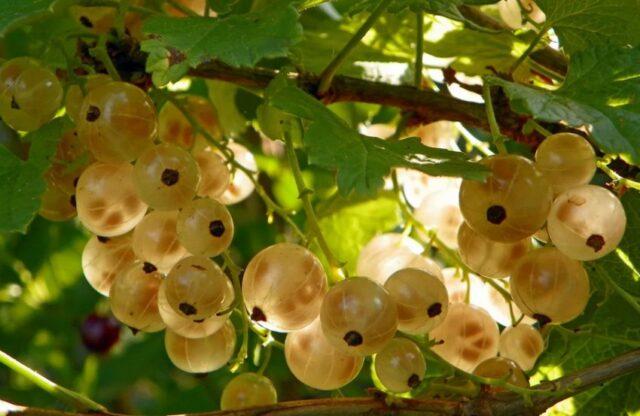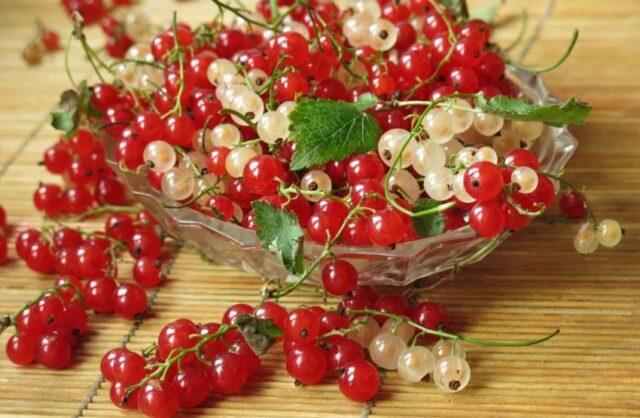Content
Imperial currant is a variety of European origin, which includes two varieties: red and yellow. Due to its high winter hardiness and unpretentiousness, the crop can be grown in all regions of the country, including the Urals and Siberia. With proper care, 7–8 kg of medium-sized berries can be harvested from one adult bush.
Breeding history
Imperial currant is a variety of European selection, bred abroad. It is represented by a red and yellow variety, with the golden one being the most popular. Currant has good winter hardiness, which allows it to be grown in different regions of Russia:
- Moscow region and middle lane;
- southern regions;
- Ural.
This currant variety is not included in the Russian register of breeding achievements. Thanks to its unpretentiousness, the culture has become known to many summer residents. According to their reviews, it is possible to grow Imperial currants even in Siberia and the Far East.
Description of the variety of red, yellow currant varieties Imperial
The description and characteristics of the yellow and red varieties of currants of the Imperial variety practically coincide (with the exception of the color and, in part, the taste of berries). The bushes are compact or semi-sprawling, of medium vigor, 120–150 cm high. In this case, plants of the red variety may be slightly higher than the yellow one.
Leaves are light green, five-lobed, medium in size. In young shoots, they are leathery and large, and on older ones they are smaller. Branches become lignified with age, their surface acquires a grayish-brown hue.

The berries of the Imperial yellow currant are distinguished by a sweeter taste, and in the red variety, the fruits are noticeably sour
Berries are oval, small in size (one weight 0.6-0.8 g). The clusters are also small - 4–5 cm each. Fruits in the light seem translucent, their skin is thin, but at the same time strong, which ensures good preservation of the crop. Coloring depending on the variety: light yellow, cream, bright red.
The harvest of the yellow variety is most often consumed fresh, and the red one is used for preparations for the winter (jam, jam, fruit drinks and others).
Characteristics
Both varieties of Imperial currant are distinguished by good resistance to weather conditions. They can withstand frosts and droughts, therefore they are considered universal (in terms of choosing a region for planting).
Drought tolerance, winter hardiness
The description of the variety indicates that the plants are resistant even to extreme frosts (up to -40 degrees). The culture can be grown in different regions, including Siberia and the Far East.
The drought resistance of the imperial currant is also quite good. But in order to maintain a normal yield, additional watering should be organized during the dry season.
Pollination, flowering period and ripening times
Imperial currant belongs to self-pollinated varieties. She does not need bees, but to increase yields, it will not be superfluous to plant a number of representatives of other species. The flowering period occurs at the end of May, and the harvest is harvested from the last decade of June to mid-July. Therefore, the variety is classified as medium early.
Productivity and fruiting, keeping quality of berries
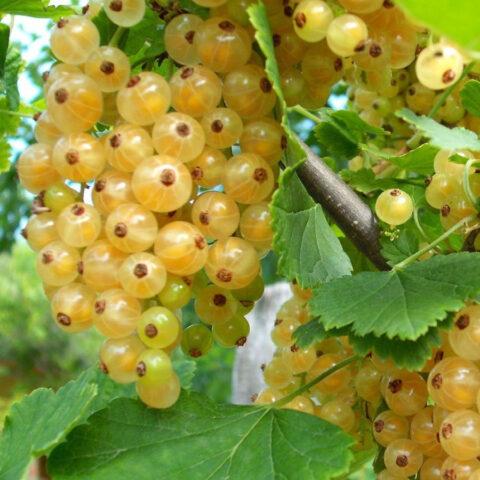
Fruiting of the Imperial currant begins from the third year after planting
The maximum yield is observed from the age of five, when one bush gives 4-8 kg (depending on care and weather conditions). The peel of the berries is strong enough, so keeping quality is high (but only in cool conditions).
Transportability is not as good as that of black currant. If it is not possible to ensure low temperatures during transportation, the maximum delivery time to the point of sale or processing is two days.
Disease and pest resistance
Imperial currant immunity is average. It is known that she often suffers from anthracnose. But under the wrong growing conditions, other infections are also possible:
- white spot;
- powdery mildew;
- goblet rust;
- septoria.
For prophylaxis, it is recommended to carry out preventive treatment with any fungicide every year (at the beginning of April):
- Bordeaux liquid;
- "HOM";
- Fundazol;
- "Speed";
- "Ordan" and others.
Of the pests, the following are especially dangerous:
- kidney moth;
- sawfly;
- aphids (leaf and gall).
As a preventive measure, in early spring, the bushes are treated with boiling water. In the summer, insects can be dealt with using folk methods. For example, to carry out processing with an infusion of garlic cloves, onion peels, a solution of wood ash or a decoction of potato tops or marigold flowers. However, if these methods do not help, you will have to use chemical insecticides:
- Aktara;
- "Fufanon":
- Biotlin;
- "Decis";
- Green soap.
The collection of labor can be started only 3-5 days after the last spraying.
Advantages and disadvantages
The Imperial currant is distinguished by its high yield. This is an unpretentious plant that can be grown in most Russian regions.
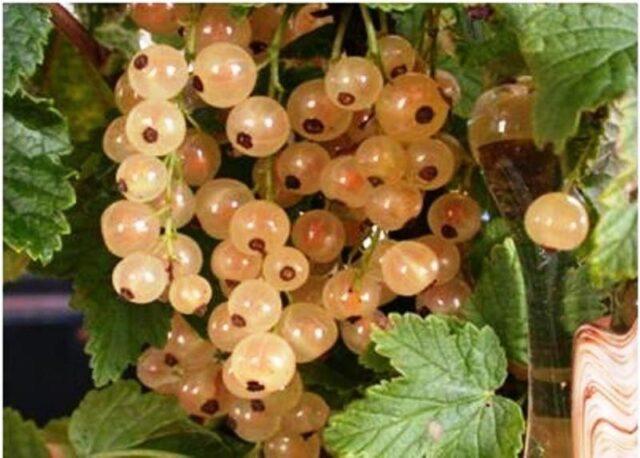
Imperial currant gives consistently high yields
Pros:
- good productivity;
- pleasant taste of berries (especially yellow ones), their versatility;
- undemanding care;
- immunity to certain diseases;
- winter hardiness;
- drought resistance;
- compact crown;
- normal keeping quality.
Minuses:
- no immunity to anthracnose;
- fruits are small, prone to overripening;
- red berries are not very sweet;
- transportability is average.
Features of planting and care
It is better to plan the planting of the Imperial currant at the end of September or at the beginning of October. If the deadlines are missed, the seedlings can be planted the next year (in April). For a culture, choose a dry (not in a lowland, without groundwater) and a well-lit area with fertile soil. Light, fertile loam is best.
If the soil is infertile, it must be dug up 1–2 months before planting and compost or humus must be added (1–2 m2). Currants grow poorly on clayey soils, so you first need to close up 1 kg of sand or sawdust (based on the same area).
Algorithm for planting currants Imperial standard:
- A month before the start of the procedure, it is necessary to dig holes with a depth and diameter of 40-50 cm with an interval of 1.5 m.
- Lay broken brick, pebbles, expanded clay on the bottom.
- Cover with a fertile mixture - surface (sod) soil with black peat, compost and sand in a ratio of 2: 1: 1: 1.
- The day before planting, the roots should be soaked in a mixture of clay and water, where you can add a growth stimulator - "Epin" or "Kornevin". The roots are pre-pruned, leaving 10 cm each.
- Plant in the center, bury and compact the soil so that the root collar goes underground to a depth of 5 cm.
- Pour with warm, settled water, mulch the trunk circle.
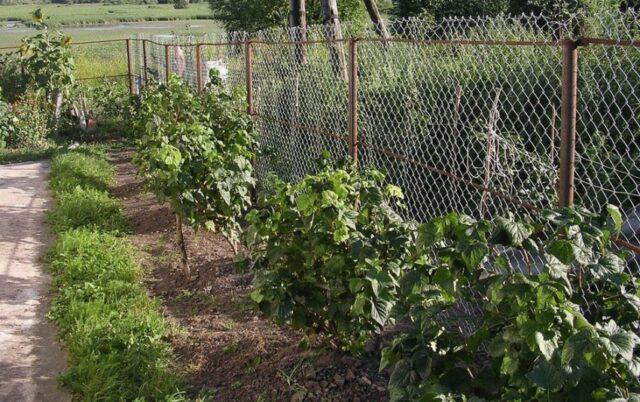
It is better to plant Imperial currant seedlings along the fence, which will protect from the wind.
Agrotechnology for growing crops is standard:
- Watering young seedlings weekly (bucket), adult bushes - twice a month. In the heat, moisten the soil every week, using 2-3 buckets.
- Top dressing from the second season. In the spring, you will need urea (20 g per bush), chicken droppings, mullein, after harvesting - superphosphate (40 g) and potassium salt (20 g).
- Loosening and weeding as needed. To make less weeds grow, plantings are mulched with sawdust, straw, needles.
- Pruning - Broken and frostbitten branches are removed every spring. In the first years in the fall, they begin to form a bush, thinning the crown and removing all three-year-old shoots.
- In late autumn, the last watering is done and the seedlings are covered with agrofibre. Mature shrubs can be grown without additional cover. It is enough to lay a high layer of mulch (5-10 cm).
Conclusion
The Imperial currant is undemanding to care, which summer residents often write about in their reviews. The bushes are moderately spreading, do not take up much space and do not need frequent pruning. They give a fairly good harvest of red and yellow berries, which are used for winter harvesting.
Reviews with a photo about red, yellow currants of the Imperial variety
